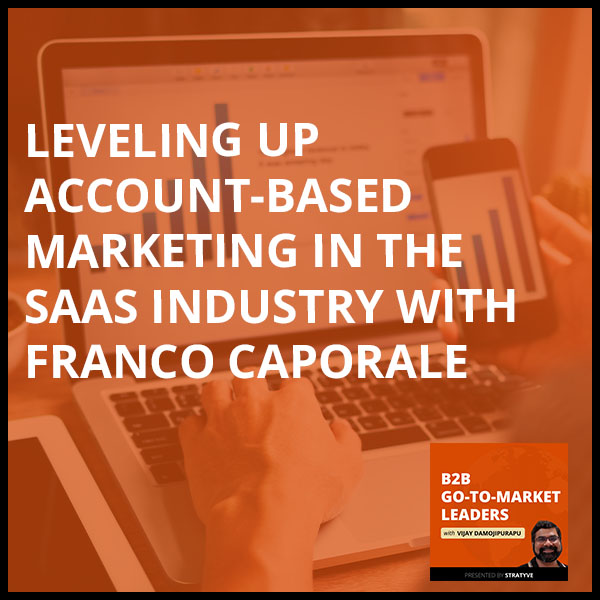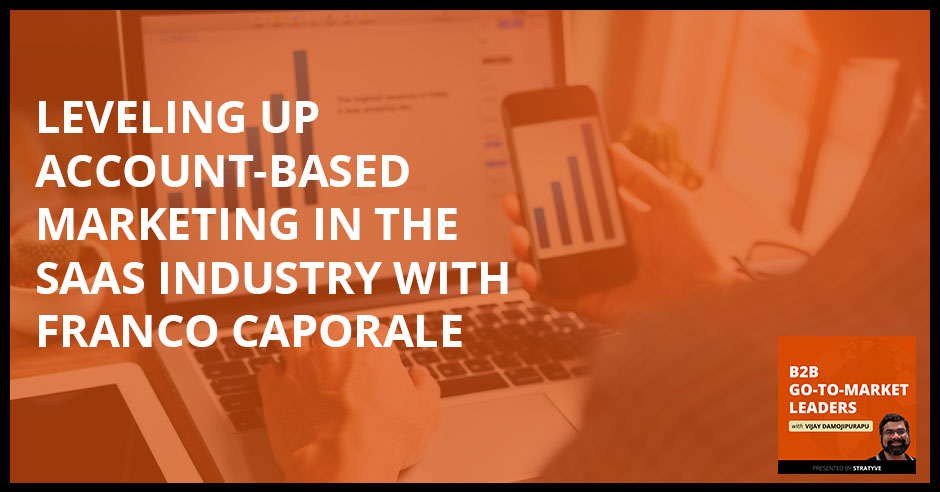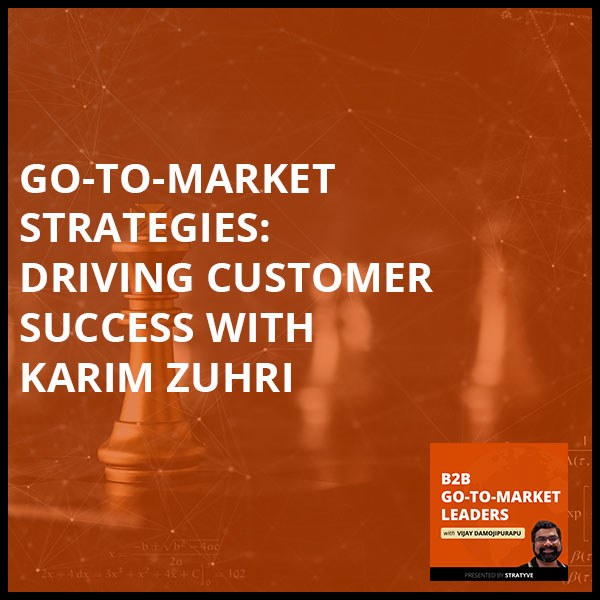
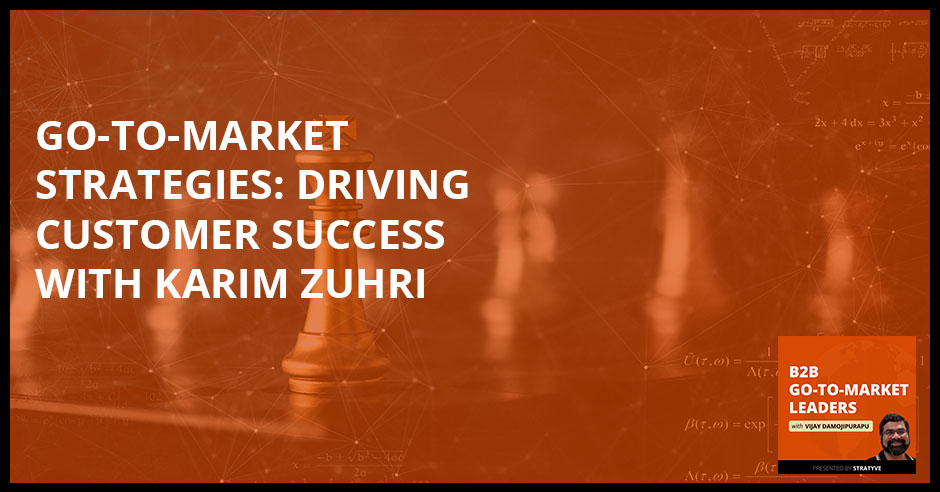
There is no one recipe for success when it comes to go-to-market strategies. Each business is unique, and you need to be ready to adapt. In this episode, Vijay Damojipurapu interviews Karim Zuhri, the COO of Cascade. Karim builds a people culture, guides with data, and leads for impact. He discusses his previous experiences with product marketing and what it takes to drive customer success. Listen and learn from his experience in streamlining and focusing your business.
—
Listen to the podcast here
Go-To-Market Strategies: Driving Customer Success With Karim Zuhri
I have with me Karim Zuhri from Australia, who is also the Chief Operating Officer of Cascade. Karim, welcome to the show.
Thank you. How are you?
I’m doing wonderful. I always like to start my show by asking this specific question to all my guests, and you are no different. How do you define go-to-market?
Go-to-market is one of the broadest terms in B2B SaaS especially. The way I would define it is like the plan that you as a company use to take out to the market product, services and offers. It could be how you organize your sales team, how you do marketing, what does your even model of a product looks like? Is it with a freemium on top, book a demo or acquisition channels through reports, content, social media, videos, brand? It’s all of these aspects or tactics that come together to define your plan of taking your offer to the markets.
We covered quite a few areas and functions within that. That includes the product piece, marketing and sales but you not mentioned about customer success or even customer support explicitly. How do you view that critical function within B2B SaaS especially?
It’s one of the biggest pieces of the puzzle. When you decide if you are in sales that are marketing lead or product lead, there are different functions that form. For me, customer success is one of the most important and crucial pieces of the puzzle with the customer experience or customer support, depending on how we call it. It’s a continuity of this offer. The go-to-market is not only at the acquisition level but it’s also at the retention level and expansion level. Cascade works in a way where we have land and expense. Our customer success teams are the people that are helping the account or the customers grow using Cascade. They are extremely important in go-to-market because they are extending the brand and they are a huge monetization source for our job.
Let’s switch gears a little bit over here more onto the lighter side of things. How do your parents/kids, if you have them, describe what you do on a day-to-day basis?
I do not have kids. It’s funny because my parents would say and have been saying something for many years that I’m a director and I do stuff that makes businesses successful. Did they ever understand what I do? Never. They just throw some names and words. They say, “He works in software. He’s a director. He’s involved in strategy and data. He helps companies.” That’s how my parents would define me.
They nailed the definition very well. It’s a combination of you help companies, strategy and you help them succeed. What else do you want?
When you are delivering results and always leaving on good terms, you can find the next shop easier. Share on XIt has been the same definition for many years. Even though my job has changed so many times, that’s how my dad is always saying. He’s Lebanese. He always starts with the word, “He’s a director. If you don’t know he’s a director, you have to know that he’s a director.” Even when I wasn’t a director, in his eyes, I was a director which is funny.
If you are a chief operating officer, which you are now but you’re still a director to him?
For him, it did not change.
Let’s talk about the journey or your career evolution. You’ve done multiple roles, all the way from risk analyst to product marketing and you are responsible end to end for all the go-to-market functions at Cascade. Walk us through the journey. Also if you can, touch on the inflection points. What led you to that next level of growth?
Starting a long time ago, I always wanted to be a filmmaker but I ended up being a software and energy engineer. I graduated. I did not want to be a software engineer but I wanted to be always in technology. The fancy fast at that point was the strategy consultant role that I took. At the end of my university, I worked in management and strategy consulting for two years. I was lucky enough that all my projects were digital transformations. All of it was about moving to the cloud, building a new infrastructure and information systems for the core business of the businesses I worked with, retail banking, insurance, government, administration and also energy. That ended with me asking myself the question, “What do I like? I’m exposed to all of these industries and businesses. I like the strategy piece but what do I want to be doing from now on?”
The answer was that the digital piece, the software piece. I moved to Amadeus, which is one of the largest companies in the world that enables airlines to connect with travel agencies. Travel is a very common word we hear. I used to work there as VP of product, helping them with all the strategy presentations, roadmap, business planning. From that, I moved to Seattle from Paris and worked for Expedia. I was working on almost the same concepts, but this time, I’m working for a SaaS business. We call it strategy product marketing.
It is interesting because it’s almost like the intersection of the go-to-market piece, which is taking this offer to the market but also talking to the product managers and engineers about what is the right product that we want to build, who are we building it for, how can we help build a product in a child mode and build layers on top of each other rather than building a sequence of things? I worked in product marketing at Expedia for three years. Then I received a message online from a very nice guy who called me. He said, “Would you like to call Bondi Beach home?” Bondi Beach is the largest beach in Sydney and the most known one. I was like, “Why not? I could explore this. I’ve been in Seattle. It’s been rainy. I love the city, but I could use some sun. What is the company that you’re working for?” That was SafetyCulture.
Before we dive into your role at SafetyCulture, there’s something unique which I’ve not seen in a lot of people that I’ve met. It’s your ability and openness to move across geographies. You started out in Seattle, moved to France or Paris and all the way to Australia. There are two pieces. One is your willingness and wantingness to shift. How do recruiters or hiring managers reach out to you? How do you let them know that you are open to moving across geographies?
I was born in Lebanon, half of my life in France, studied in Spain, did some internship in the UK and lived a bit in Berlin. I’m trying to help a startup. I stayed there five months before Amadeus. I never talk about it, but that was a very good experience for me to try to do something. I moved from Paris to Seattle and Seattle to Sydney. Hopefully, I’m going to call Sydney home. For me, the curiosity about exploring new cultures and exchanging ideas with different people from different backgrounds has always helped me learn, evolve in my mindset and look at things from a very different perspective. I worked with very large organizations in Europe and the Middle East. One of the first projects I worked on was for BNP Paribas. It’s one of the largest banks in Europe.

I used to work with five entities. The Turkish, Italian, Belgian, Moroccan and French ones. That was almost one of the first exposure to culture and how different countries work. I learned from every single piece of it a massive experience. I decided that the more I get exposed to culture, talk to different backgrounds and people from different countries, the more and faster I would evolve. My commitment to myself is every three years I’m going to move a country until I settled down somewhere that I find myself very happy in but also driving myself into the career level that I wanted to be at.
There are two pieces to my question. One is what you seek and what you want to do? There’s also the other piece of the pool. Companies, recruiters and hiring managers need to know that you are available. Is it more of you pushing and approaching them or are they pulling you like in SafetyCulture? It looks like they pulled you or reached out to you.
I have never applied for a job aside from the first one out of university. I feel lucky that I had this path to jobs where I was working hard and trying to be almost referred all the time. In Amadeus, I knew people in there before I joined. I got posted from Amadeus by the customer, Expedia and then I got the outreach from LinkedIn to move to SafetyCulture. It’s the same thing with Cascade. When you are active, delivering results, helping companies and always living on good terms, you can find the next shop easier. That was something that happened to me, luckily enough for in my career.
I want to reiterate for the readers, especially those who are more earlier on in their career. The key point that you emphasize there is to do a good job no matter what your role is. At some point in time, you will be recognized. When you leave a company or team on good terms, it will be a ripple effect.
The confidence you build comes from your determination to achieve stuff but also from a mindset that you set for yourself, which is the one I always said, “Always chase two jobs ahead. If you always look for two jobs ahead, you perform in your job in a very different way that you become excellent at the scope that you’re doing but way more than what you are supposed to be doing. Very quickly, it will be very noticed that you are bigger than the job so you get the job faster. The next job that comes in is too level faster than what you were aiming for with the same company where you are at.”
Let’s take the example of you are at SafetyCulture and when you were joining SafetyCulture, let’s apply your principle, which is you’re thinking about two jobs ahead. How did you approach that when you landed at SafetyCulture?
I have a strategy when I come to a new business which is my six first months are the hardest work I ever do in a business. I work extremely hard. I meet and help every person, whether it’s a small or big thing. I try to bring all my experience. I read so much. I become obsessed by the business model, industry and the problem that the company is solving. In my first six months, I arrived and did that same way. I connected with everyone. I learned everything. After six months, you become almost the go-to that people come to, ask questions and recommendations. That’s what I have done at SafetyCulture and what I’m doing as well is helping everyone trying to understand.
There’s a concept that could be a bit controversial but I don’t try to listen too much. When you come to a new business, it’s the best opportunity for not listening too much and bringing something different. That’s something I always do. “This is what you have been doing. I would suggest this.” I listened to it but then I also try to push them for new things that they haven’t been exploring. I’m getting this idea of saying, “For the next three months when you start a job, just listen. You become part of what you have listened to then you are not able to change.” If I summarize what I said before, I work hard. I understand everything but at the same time, I’m pushing for change and bringing new stuff as soon as I can, not just listening.
Talk about what you’ve done at SafetyCulture that led you to what you’re doing at Cascade.
The confidence you build comes from your determination to achieve stuff, but also from a mindset that you set for yourself. Share on X
SafetyCulture is the newest unicorn of Australia. I joined them when they were at a $440 million evaluation. They are sitting at $2.1 billion. We had two funding raise series in my time there. The main thing that I have done with them is driving focus, shifting almost the entire strategy of the business through narrative, trying to find what is the best narrative that we should be designing and then start building towards this narrative. It was the continuation of what Luke Anear, the CEO has done. I tried to lift up a lot of our concepts and stories to meet the next level of the story, which is this platform for operations that helps businesses perform better through quality checks, safety checks and operation checks. This is my biggest addition to SafetyCulture during my time with them.
You were at SafetyCulture and leading product marketing, includes the life cycle marketing and customer marketing also. Not just at the prospect or the buyer stage but even after. I clearly recall from our conversation maybe what it was. One thing that stood out was your love and passion for segmentation, as well as hitting the right customer journey points, delivering value throughout. That was a key. That’s what I saw in you.
Let’s talk segmentation. That was the biggest outcome but narrative comes from a lot of research, analysis, discussions with customers, talking to existing customers, people online, prospects and businesses in general. You come to a decision around your customer segmentation. Also, I did customer profiles and target audiences. As soon as they arrived to SafetyCulture, I took what I did at Expedia, which is customer segmentation. Customer segmentation has always been the driver of this narrative that I talked about but has also been the biggest thing that helps businesses restructure their teams to be focusing on what matters, ideal customer profile and building all the narrative around the target audience that you are looking at.
When you are talking about improving operations, increasing the quality and safety, you’re targeting almost a larger organization because this is where the silos start happening and distributed teams are across different departments and locations. The segmentation was a foundational work that helped the whole business streamline, focus, build a better narrative, design all our marketing campaigns as well as our product roadmap, help us build the right product, offer and narrative. Thanks for reminding me of this. I’m almost doing the same thing with Cascade.
That leads to your role, which is what you’re doing at Cascade. That’s a big jump when you are earlier responsible for product marketing pieces. Now as a COO, you’re responsible for different aspects, not just within marketing but even within sales and other pieces. Talk to us about how you’re making that mental shift. Let’s start off with that first.
One of my biggest weaknesses is that I have always been able to build on top of something but I’m never a starter. I don’t start things. I finished them well. The other thing is I have always been in theoretical jobs where I tell people what we should be doing, “This is a strategy, plan, the best way to get there, how I would structure teams, build the product and talk to the customer.” It has always been my job to be advising, recommending and showing how we should be doing it. At the end of SafetyCulture, I was getting frustrated by myself because I’m never executing. I’m never on the operational side of the business and see if what I say makes sense on the ground. When I met with Tom, the Founder and CEO of Cascade he said, “Do you want to co-manage the business with me?” I was like, “What does that include?” He said, “Everything, from the theory and the strategy to the execution.”
This was the best next step for me because I was thinking, “What do I do next?” That was the best outcome because this is the first time I’m exposed to the execution. I’m also accountable for the results. Not only for the theory. It’s always easier for me to say, “I told you so,” when it didn’t work. How do you execute it sometimes was the hardest part. I’m figuring this out because a lot of my concepts, principles and theories are being exposed to the execution and getting concretized.
Are all of them working? Absolutely not, but executing them that I’m realizing where I was failing and falling short. I’m managing all the customer-facing teams. The marketing, customer success, account executive and customer experience. I’m also managing the operational side of the business with the finance, people and performance with the operation. Moving offices are included. At the same time as this feeding as much as they can into our PLG model that we’re building into our freemium, structure overall, into our organizational strategy and the product that we are shaping up to the next level. That was the main rationale for me moving. This is how I did the move so far.
This was one of those inbound like Tom or someone approached you for a role similar to your previous roles?

I had a Headhunter calling me. He said, “Would you like to work for a company that is disrupting the world of strategy and redefining how the execution of strategy is the key to success?” That reminds me of something. I always have done beautiful PowerPoint in my management consulting experience. We would sometimes leave even earlier than the strategy is presented or even committed. It was a beautiful PowerPoint slide. I was very good at design. These strategies sit on a shelf for 6 or 7 months. Seven months later, they will do another strategy. The other one would have never been executed because it’s too late but it’s always this cycle. In January, you want to go to the gym. February, you have 2 or 3 birthdays and never go to the gym again, then in May, you pick it up. It’s the same with strategy. That’s why I got excited for this topic of strategy getting executed. When the Headhunter called me, I was like, “I want to do this. Let’s talk about it.”
What you’re doing at Cascade is you’re building products that help other teams execute their strategy better but at the same time, you are responsible for the execution of your strategy. When I was at SugarCRM, I was doing product marketing there and responsible for one of the products that we were looking to launch there. I’m telling others how they should do the job better but it also applies to me where I should be doing the jobs. It’s almost duckfooting.
It’s funny when we are in product marketing how we see the world from a very different perspective. Because product marketing becomes a coach in some ways, we all listen to each other. We agree on things. I call it anonymous. We go into a room and talk about it. No one understands us. No one wants to listen to us. We go out of the room even more empowered and feeling that we were absolutely right but that was painful when you execute it. Cascade is about strategy execution and acceleration. Ourselves, we use Cascade to hit every next milestone we have. It’s a simple concept where you put your plans in one place and assign goals, not just projects.
You assign the strategic focus areas of the business to people and hold them accountable. You’ll have them define the projects, leading, lagging KPIs and then start seeing how they are working on a daily basis towards the strategic goals that they have set with the business. It’s an immersion of bottom-up and top-down meetings together because that leadership team is sharing a vision, direction and context. The teams are building their own strategy with the energy, buy-in and adoption that you always need in a business to make a strategy happen.
Explain to us as to what is a need for a product that will help the execution of strategy? What are the gaps that are out there? You have big brands as your customers. How are they using your product Cascade in executing their strategy? What kind of results are they seeing?
Every business needs to put a strategy together then execute it. The problem that Tom has found when he started Cascade and built the platform around 2016, 2017 was that people want to plan and keep planning for 2, 3 or 6 months sometimes. They never get the opportunity to execute because they think that the plan is not ready. It’s all about the perfect and communicating the plan but the reality is one month after you started the plan is where you start needing to change some of the plan. You are looking at a specific goal that you want to hit at the end of the year and you start building strategies to get there. Strategies are tactics to hit the goal. Strategies should be changing as you learn what is working and not working.
When he started discovering the pain of customers, all we’re saying is that we have a strategy but it never gets executed. When COVID hits, strategy took a backseat. I try to do one hour of strategy per week but the rest is BAU, Business As Usual. This is where we figured out the biggest problem of customers, which is, “How do we help customers execute on amazing strategies and plans that they start the year with and they never get realized at the end of the year?” The platform was built this way, saying, “Let’s plan and manage the execution but at the same time, let’s tracked in real-time what is happening. The tracking helps you feedback to the plan, change the plan over time. PowerPoint and Excel file does not let you do this.”
The other side of the world is task management and project management. The challenge with task management and project management is that it does not look at the context and the big picture. You can do ten projects and those are extremely well executed. All of them finished on time but the combination of the project does not drive the results of businesses. The biggest thing that I would say when you execute strategy and start with the biggest focus areas is this alignment where you align people towards bigger goals rather than cited in into projects that sometimes don’t connect to each other.
That’s a big topic. We can spend hours and hours diving into that strategy piece, definition and execution. The challenge with that is a lot of things. When you talk to a lot of the people within industry, the sea strategy is a buzzword. They see that more as a very shiny object versus what many people don’t realize, especially when they look at the mid, the lower management or even the individual contributors. It’s a vehicle for everyone to align.
If you always look for two jobs ahead, you perform your job in a very different way. Share on XTwo things happen. The first one is people focus on the framework and they say, “We are moving to OKRs.” What does that mean? You’re moving to OKRs, but what is your strategy? What are you trying to achieve? How do you break it down into smaller pieces is what matters. It’s not the problem of the framework. Any framework can work. It’s all about the content of your strategy. The second one is how do you fix this messy middle? You have your executive that understands the vision. They are trying to communicate. It’s very often to the teams that are attending them that this is what we want to be. They tend to speak about goals all the time. They say, “This is a strategy but this is just the goal.” The strategy is the definition of how to get there. You got the people on the ground very busy with tasks, doing stuff. They are doing what they were told, but then there’s this messy middle that sometimes it’s not able to translate this vision into tasks from this direction, feeding back from the bottom up the feedback and the results in a structured way that is feeding into the vision and the direction of the business.
Let’s bring it back to the core topic of this show which is go-to-market. How would you describe explain the go-to-market of Cascade? What do you see are our big goals for the remainder of 2021?
We are a SaaS business. We have a free trial that gives you access to the product to see the value that you can get. As soon as possible, we try to communicate with our ideal customer profiles to help them when strategy becomes a very complex topic, where there are many departments and many teams trying to align and fix a strategy. This trial is converting to PLG freemium model. Our biggest focus in terms of go-to-market is to address this breadth, try to open and make strategy available to everyone through this freemium concept where they can use Cascade to a certain level with higher level and high-value features that can help them achieve everything they want to a certain extent.
You talked about product-led growth, freemium and free trial, which means it is a bottom-up strategy in this case where the end-user has some challenge or pain. They feel the pain in understanding and executing the strategy. In your case, who is that persona? Let’s speak an example of a marketing team or even a sales leader. Who’s a person who feels the pain, reaches out to Cascade and downloads Cascade?
Every time we speak about PLG, a lot of businesses immediately think about the end-user as a very low level in the organization but it’s not always true. In our situation, our first users are sometimes head of the operation, head of supply chain, head of strategy, head of finance, feeling that pain based on their KPIs that they are not hitting. They believe that there is an efficiency and effectiveness problem within their company. They reached out and tried to do it themselves. Are we 100% self-serve? We are not yet there. Our account executives get in contact with them, the ICP, Ideal Customer Profile and try to help them go faster on the journey. This approach is the proactive approach to some of the customers that land into Cascade. We take them on the journey faster through human interactions and communications.
We have them build a plan and then identify who is involved in the strategy, who are the departments that need to be on to execute the strategy? It’s almost like a London Expand for this cohort of customers. We jumped into calls and conversations with them as soon as possible. Then you got the self-serve side, which is the other type of customers, which are small companies, which would be a place where they can build a plan and execute it with 5 to 10 people. It’s very often the CEO of the business. They are a small company. It’s still top-down from that perspective if you take examples off like Johnson & Johnson, one of our largest customers.
They use the platform to roll out the COVID vaccine. That’s their biggest project. It’s led by the supply chain team. They are bringing on boards all the distribution teams, their relationship with their customers and how do they roll out the vaccine in the most effective way. They start almost figuring out who is involved in these strategies and bring them onboard through an expansion of the use case every day. We enable these conversations from a strategy perspective. We enable them with support, whether it’s at a product level or organizational level as well.
That gives us a better sense of who your personas are as well as when you talk about the Freemium. I have a much better sense now as to how they reach out to you and experience the free pod. It’s a combination. It’s not entirely productive growth. For me, when I think about productive growth, Freemium and bottom up, it’s like products are like Zoom, where I can go download and run it on my own. Once I feel good about it, I can go talk to my team and upper management then we adopt Zoom. That’s just an example. Not that I’m promoting Zoom over here. That’s the model that comes to my mind.
The next level is when we get Freemium, you will be able to build a bottom-up plan and then involve your team. You can be the first user. The concept of the strategy involves someone that is thinking strategically about the team. Cascade is made for teams. It could be a team leader coming and bringing 2 or 3 people into the team or a team member bringing the team leader because they’ve heard of it. This is where the PLG would be almost 100% self-serve and driving our Freemium model.

What do you see are the top goals or the biggest goals for your team for the second half of 2021?
I’m not going to go into the details, but we are on a journey to double the business in 2021, double 0.5 in 2022 and hopefully be a unicorn towards the end of 2023, 2024. It’s all about two things. The first one is the breadth, bringing more organizations on board. The second one is the depth which is extending use cases within our existing customers. We are focusing on monetization for retention and engagement at the same time, as well as acquisition like every company does. The two North Star metrics for the business are monthly active users and ARR or what I would call NRR, which is the Net Revenue Retention of our existing customers.
You and your team pulled off the world’s first strategy festival. Talk to us about how you did that planning. We are talking about 10,000 registrations. That’s a big number and you pulled it off.
I met this crazy guy. He said, “I want to work for you.” I was like, “Lucas, what do you want to do?” He said, “Give me something and I would do it.” Lucas is Argentinian. He’s first is in his MBA at the university. He’s like, “I’m passionate about your topic. Give me a big thing and I would do it.” I was like, “Let’s throw the world’s first festival of strategy. Let’s make strategy fun and accessible for everyone.” He said, “Give me a week. Let’s build the plan.” After presenting some good concept he said, “We need comedy, live music and top-line speakers. I can commit to 2,500 registrations.” I was like, “It seems reasonable. What about we get a goal of 5,000?”
Almost two weeks of outreach, we were able to convince incredible speakers from large organizations like ex-CMO and CSO of Starbucks and Disney, General Manager at Heineken, General Manager of Cloud Azure, Microsoft, Head of Strategy at Google. With the names coming in to speak about strategy and why strategy is broken, we started seeing an incredible registration number going up then we hit the 5,000. I was like, “I never said 5,000. I said 10,000.” We hit the 10,000 through variety. That’s a lot of hustle. It’s lean execution with delivering the message that is right to our customers on social media. We did some paid marketing and email communication to our existing customers. We were able to make it.
You pulled out something that any big companies and even startups would wish for. I’m happy for you in what you did. It looks like you found a superstar in your event management and event person.
Thank you.
Even if you look across your shoulders to your peers in the industry, who played a big role in influencing and inspiring to what you are doing?
There were a lot of people on the journey that I was extremely inspired by. I learned from so many people a bit of things. To be very fair, the person that inspired me the most in my entire career was Luke Anear, the Founder and CEO of SafetyCulture. He inspired me the most because of his determination and thinking about the future with his teams while he’s talking about the present. It’s almost an incredible energy to show you the future as part of the present all the time and drive your motivation as if you were in the future, but you are in the present. I don’t know how to speak about this, but it was one of the game-changing moments of my life when you inspire people and giving context rather than control what they are doing but also give them the vision that did not happen and make them make it happen that same day. It’s something that I learned forever. His obsession for the customer and for the mission that has been driving the team has been outstanding for me. He influenced me a lot in my life.
Testing early is the best concept that applies to any business, industry, or job. Learn fast, fail fast, and improve fast. Share on XClearly, strategy is a big topic for you but besides strategy, what topics are top of mind for you? How do you keep yourself up-to-date? Is it the combination of books, community, podcasts or even other forums? What are your vehicles for you to come up to speed and ramp up on those?
I haven’t been reading as much as I wish. I try to read a lot of blogs online. Reforge is one of my favorites when it comes to product-led growth, along with an open view. For me, what I also look at is a lot of inspirational leaders that can help me also speak better and communicate better what we’re trying to do with a team. It’s a heavyweight. We have grown the team from 30 people to 60. Am I doing everything right? I’m learning a lot. This leadership role needs a lot of communication skills and work on how to address problems that are company-wide but also how to communicate a vision every day without being too pushy but also without forcing some ideas on extremely incredible people around you in the team. I’m trying to talk to my mentors. Most of my knowledge comes from the mentors that I tried to connect with as well as the experience itself, reading about the business from Reforge, often to you and other companies, had been very useful for me.
The last question for you is if you were to wind back time and go back to day one of your first go-to-market roles, what advice would you give to your younger self?
It’s testing faster. I used to read too much online. Sometimes reading is not as good as we think because we read too much. We stopped at the theory and try to align to make that plan perfect. From a theoretical perspective, we do all the analysis, research and move testing to a bit far in the journey. Testing early is the best concept that applies to any business, industry and job. Learn fast, fail fast and improve fast is something that I didn’t use to do very well in the past.
How can people learn and find more about you? What is your final message to the audience?
First of all, thank you so much for reading. I’m talking about so much stuff. Thank you for this opportunity. I’m trying to be very active on LinkedIn. Anyone that needs any recommendation or advice on anything let me know on there. I answer very practically and quickly as well.
Thank you so much for your time, Karim Zuhri.
Thanks for having me. I enjoyed it, so thank you so much.
Important Links
- Cascade
- SafetyCulture
- LinkedIn – Karim Zuhri
About Karim Zuhri
 I help companies scale up and grow into unicorns. I build teams of teams.
I help companies scale up and grow into unicorns. I build teams of teams.
My mantra: build a people culture, guide with data and lead for impact.
Passionate for technology, product and growth strategy formulation, polyglot B2B Product and Growth senior leader with a multi-cultural, engineering and management consulting background.
Demonstrated track record of strategic led growth through building, delivering and servicing SaaS products and operations excellence.
In 2018 – 2020, I helped building and growing one of Australia’s newest unicorns, SafetyCulture, valued at $1.3 billion (in the middle of a pandemic, April 2020). A fast-growing operations & safety PLG platform with 400+ employees globally with 100% YOY revenue growth.
In 2018, I managed 2019 USD 15M+ growth and marketing plan including strategy, company-wide programs, budget, financial models, investment scenarios and digital marketing platforms.
In 2018, I managed a global segmentation & customer insights team (12 people, 7 departments), which helped shape and redefine the company go-to-market approach and customer strategy (product priorities for ICP, customer success, marketing and sales structure). This resulted in significant QoQ growth quickly after implementation.
In 2016 – 2017, I managed and launched a new pricing model for customer service generating over 4M€ of company additional revenues at European level.
“I could either watch it happen, or be part of it.” – Elon Musk
“Every person I meet is my superior in some way. In that, I learn from them.” – Emerson
Love the show? Subscribe, rate, review, and share! http://stratyve.com/

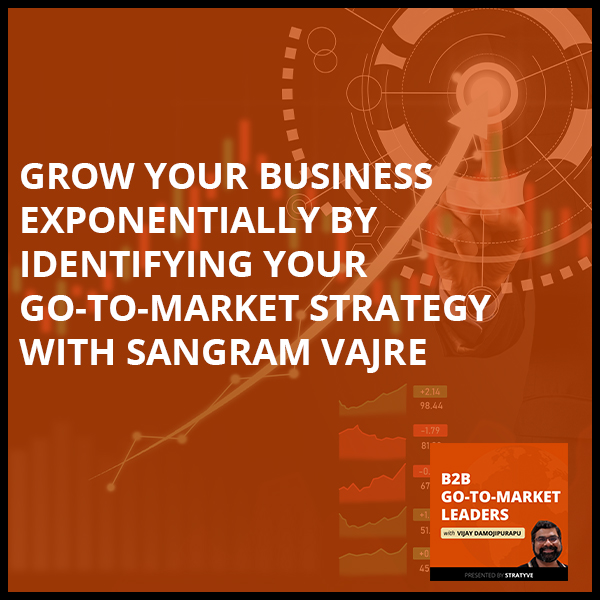
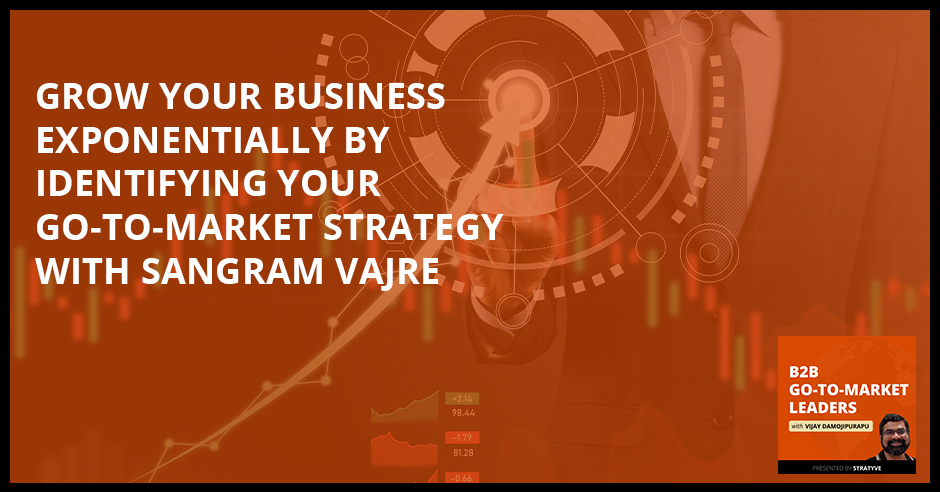




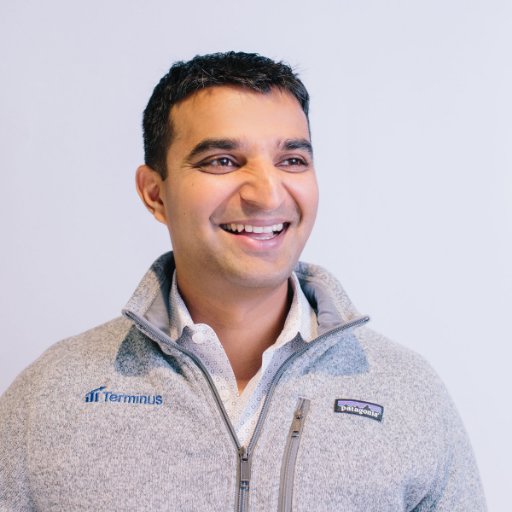 Sangram Vajre led marketing at Pardot (acquired by ExactTarget and then Salesforce for $2.7B). Soon after, he co-founded Terminus which hit $1M in the first year. Within 6 years, Terminus hit $120M, growing to over 200 employees and ranking No. 21 on Deloitte’s Technology Fast 500 list and best places to work. Sangram now serves as Terminus’ official “Chief Evangelist.”
Sangram Vajre led marketing at Pardot (acquired by ExactTarget and then Salesforce for $2.7B). Soon after, he co-founded Terminus which hit $1M in the first year. Within 6 years, Terminus hit $120M, growing to over 200 employees and ranking No. 21 on Deloitte’s Technology Fast 500 list and best places to work. Sangram now serves as Terminus’ official “Chief Evangelist.”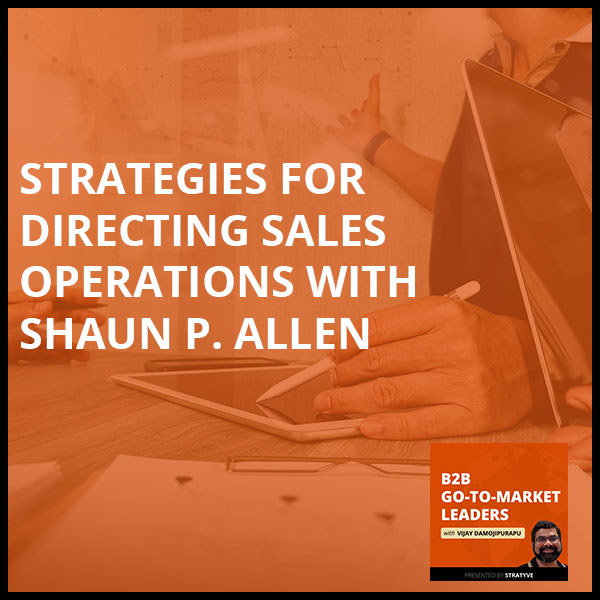
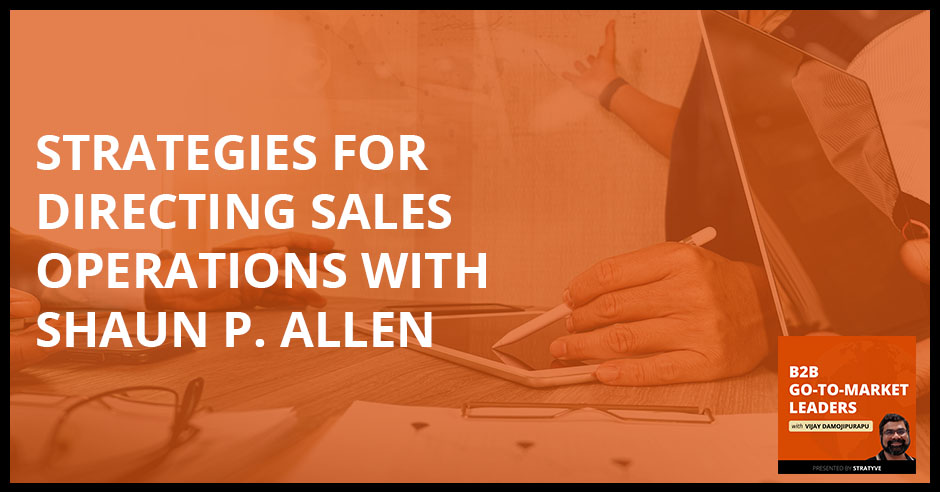



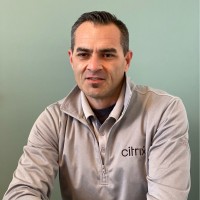 A growth-minded builder, in a few words. More specifically, leading large growth-minded Sales Organizations to win. Well-versed in building robust Digital Sales efforts, currently in SaaS Software sales for an industry leader (hint: workspace for everyone). Lucky enough to have worked with 50,000 + businesses and partners in their Digital Transformation journey. Just getting started though!
A growth-minded builder, in a few words. More specifically, leading large growth-minded Sales Organizations to win. Well-versed in building robust Digital Sales efforts, currently in SaaS Software sales for an industry leader (hint: workspace for everyone). Lucky enough to have worked with 50,000 + businesses and partners in their Digital Transformation journey. Just getting started though!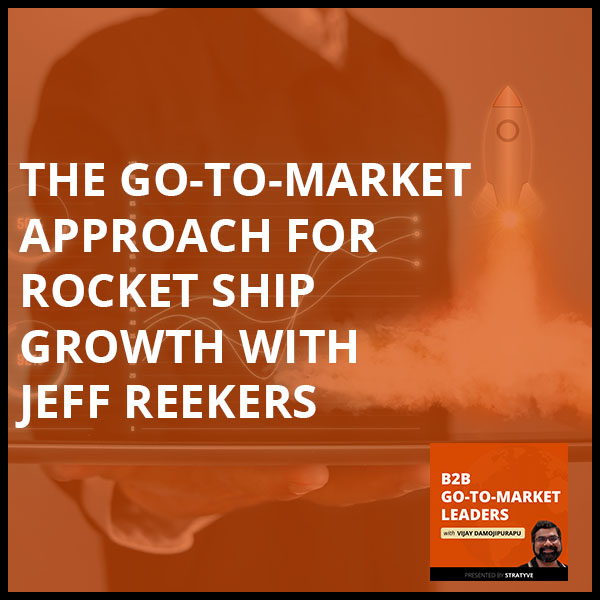
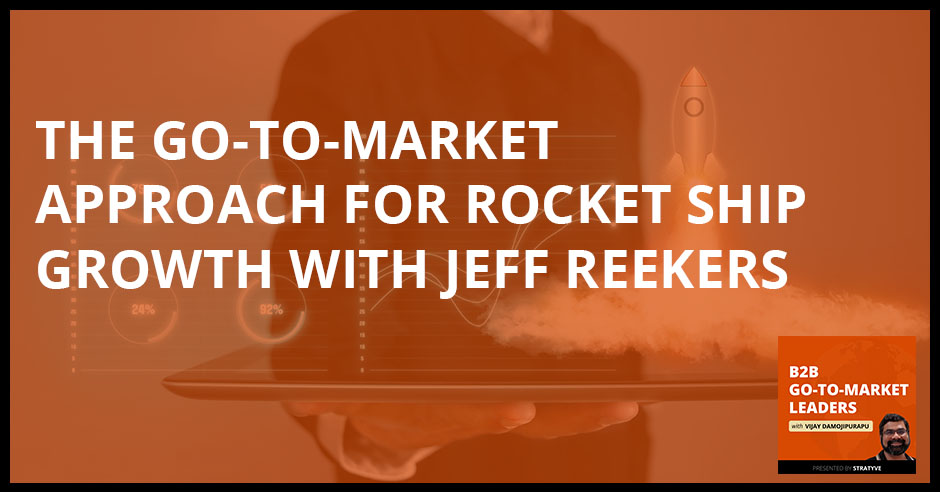










 EQ Driven VP Marketing @ Tatsoft | Servant Leader | Helping Enable Industrial Applications | AI/IIoT/AR/VR Evangelist
EQ Driven VP Marketing @ Tatsoft | Servant Leader | Helping Enable Industrial Applications | AI/IIoT/AR/VR Evangelist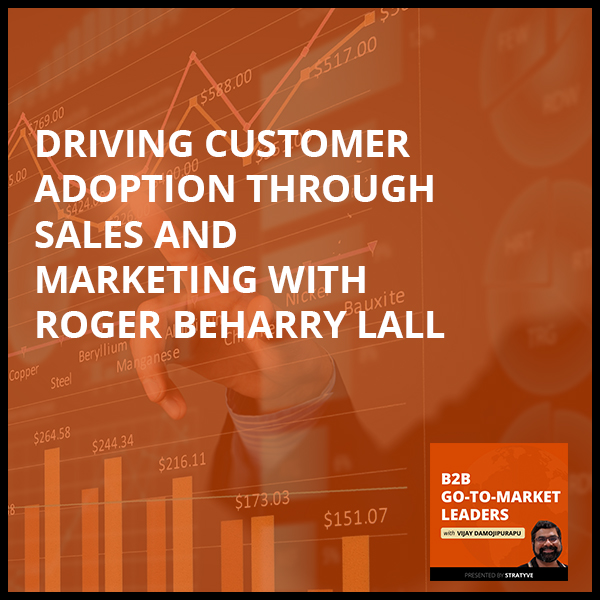
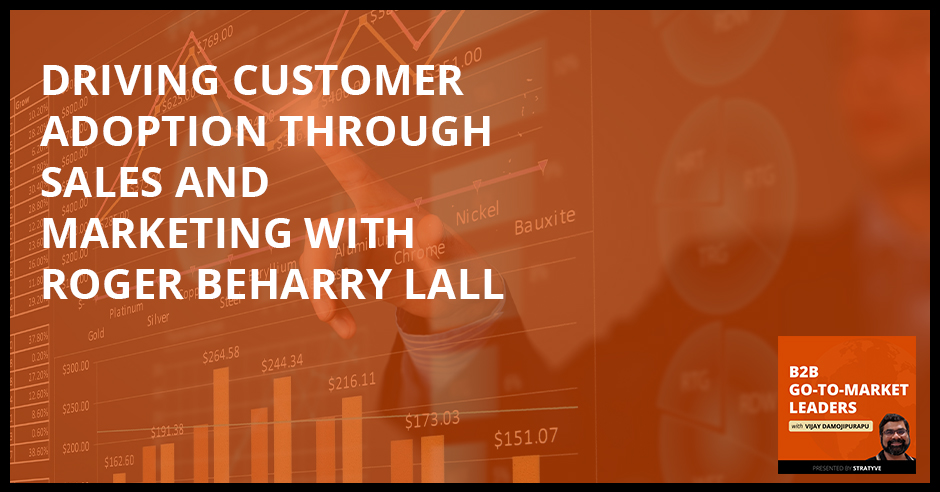





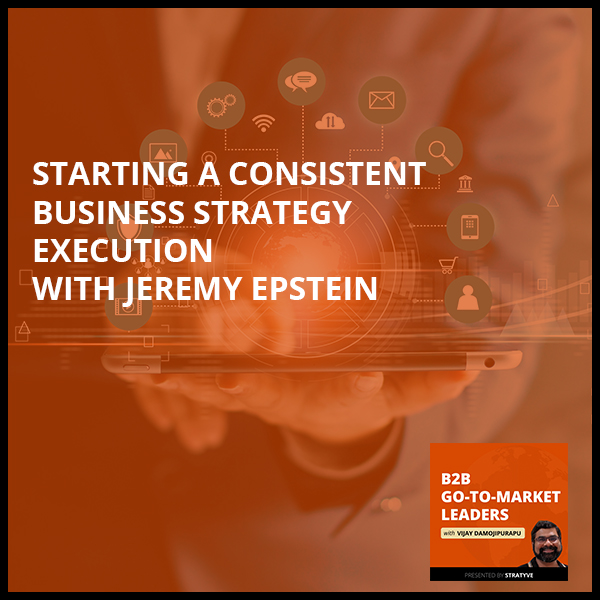
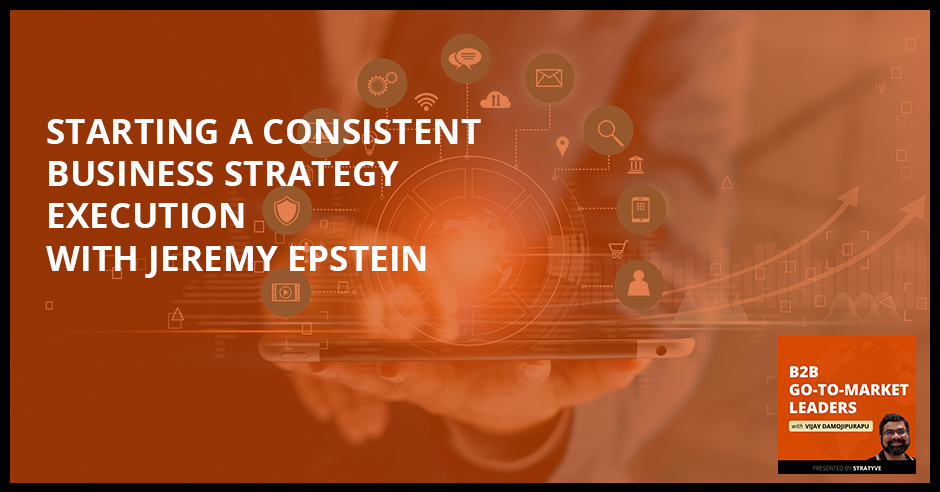


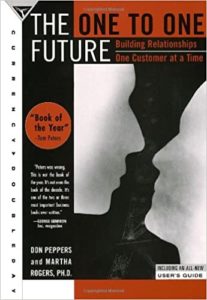



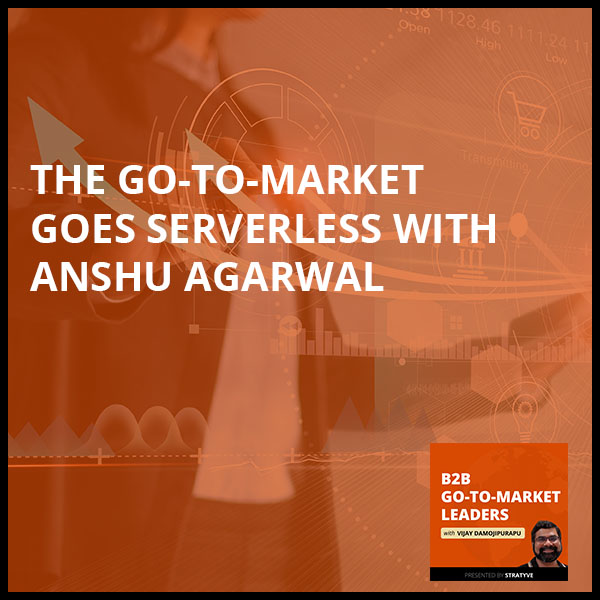




 Anshu is an experienced senior-level executive with extensive experience at startups and Fortune 500 companies in Marketing and Product Management. She has strong expertise in positioning, marketing communications, new product launches, business planning and go-to-market strategy and execution. Anshu has a reputation for successfully building and leading high-performance startup teams. She has experience with both hardware and software products including SaaS.
Anshu is an experienced senior-level executive with extensive experience at startups and Fortune 500 companies in Marketing and Product Management. She has strong expertise in positioning, marketing communications, new product launches, business planning and go-to-market strategy and execution. Anshu has a reputation for successfully building and leading high-performance startup teams. She has experience with both hardware and software products including SaaS.